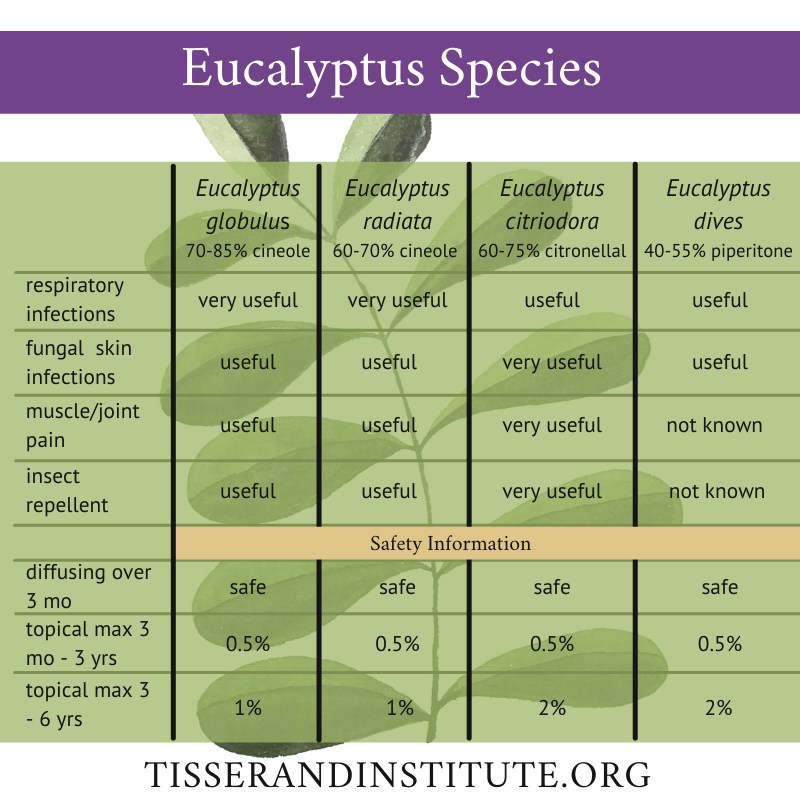These are among the most commonly used Eucalyptus oils in aromatherapy. E. radiata is sometimes said to be “gentler” than E. globulus. It does have a little less 1,8-cineole and has a pleasanter, softer odor, but the difference in terms of safety is almost negligible. Both oils are of course wonderful to use in respiratory infections.
Corymbia citriodora is the more correct name for E. citrodora, but that would not look so good in our infographic! I feel the potential of this oil is sometimes underestimated. As well as being a useful insect repellent, it is an effective remedy for fungal skin infections (pleasanter than Tea Tree, and works well with it – use at up to 5%), and is also one of the best oils for muscle pain.
Not very much is known about E. dives and piperitone, but we do know that it’s a relatively safe molecule. There are other commercially produced Eucalyptus oils, most of them rich in 1,8-cineole like E. globulus and E. radiata. But there are also species with a high content of molecules such as limonene, citral, geranyl acetate and cryptone.


I often heard from my grandmother that she uses eucalyptus oil to treat fungus. This did not give a strong result, but it relieved some of the symptoms. My grandmother did not like going to the doctor and was always treated only with natural remedies. I agree with you that eucalyptus is underestimated, more and more people are talking about other oils. But I like it.